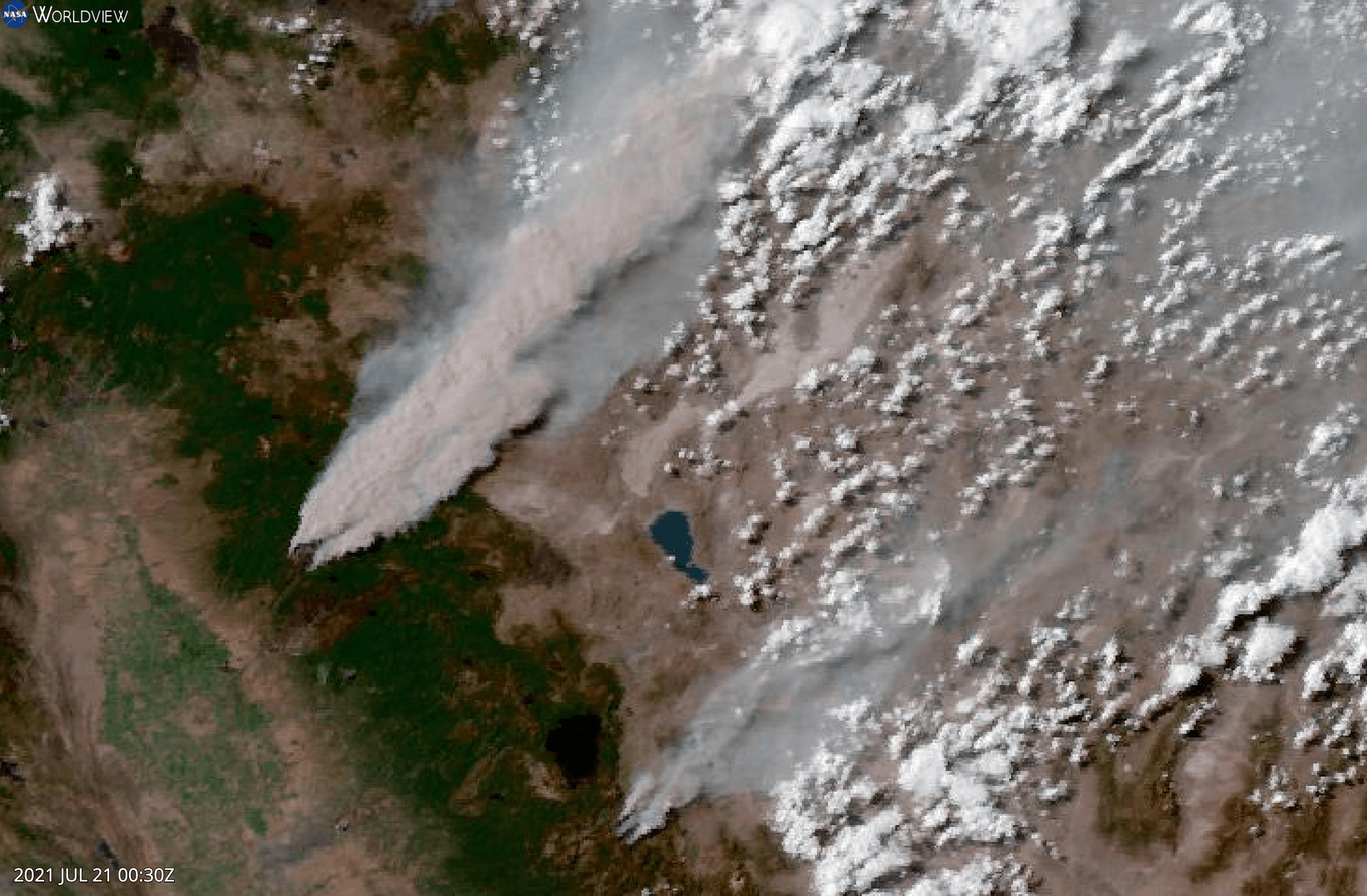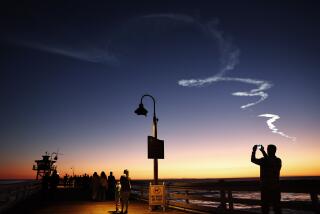Radiation races toward NASA spacecraft; it may be âa good thingâ
A solar flare that sparked a spectacular light show Monday took a convenient left turn. But although Earth is now safe from the impact of a solar storm, some NASA spacecraft are in the line of fire.
A solar observatory that monitors space flares; the Mars Science Laboratory, now traveling to Mars with precious cargo, the rover Curiosity; and the Spitzer Space Telescope will feel the effects of the solar storm, said solar astrophysicist Alex Young.
âThe Spitzer Space Telescope is going to take the biggest impact,â Young said Tuesday in an interview with The Times.
And thatâs just fine.
Such craft are battle-ready, scientists are prepared to take evasive action, and there are some tough lessons that need to be learned for the sake of space exploration.
As Young noted, scientists want -- and need -- to know what radiation is like in space, not to mention the problems it can cause. âSomeday ... we hope to travel to Mars ... eventually with manned missions, so itâs critical we understand the radiation environment.â
Still, solar storms can deliver a powerful punch. A flare is followed by a blast of material called a coronal mass ejection, made up of solar plasma and ionized gas that contains a magnetic field.
Such an ejection has âa snowplow effect,â said the scientist, an ADNET Systems employee who works at NASAâs Goddard Space Flight Center in Greenbelt, Md. As the plasma and gas move through space, they can gather up particles, creating a storm thatâs âvery, very high energy, very fast.â
For spacecraft, such a storm can short out electronics and even damage solar panels. And it can pose a deadly peril for astronauts (though none are in danger from this solar event), creating the potential for radiation sickness that, if strong enough, could prove fatal.
Mondayâs âmoderate-sizeâ flare shouldnât result in great danger to the NASA spacecraft. But even so, Young said, they are hard-tested to ensure they can handle this sort of thing -- and more.
In addition to having tough equipment, the spacecraft have something else going for them -- operators who keep on top of hazardous space weather.
A primary job of the Space Weather Center is to forecast space weather to make spacecraft operators aware of possible problems, Young said. If necessary, a craft can go into âsafe mode,â which means to power down -- sort of like âunplugging the TV set if you knew a lightning storm was going to hit your house.â
And when the bad weather hits, the Mars Science Laboratory can gather data. The laboratory has a âradiation assessment detectorâ whose purpose is measuring radiation.
So riding out a solar storm isnât bad.
âIn some ways, it might even be considered a good thing,â Young said. âIt allows us to make measurements and figure out just what itâs like out there in space.â
[For the record, 6:08 a.m. April 18: An earlier version of this post incorrectly linked to the National Oceanic and Atmospheric Administration Space Weather Prediction Center instead of the NASA Goddard Space Weather Center.]
ALSO:
1, 2, 3 ... counting penguins -- by satellite
Delivering the space shuttles is tougher than you may think
Titanic today might dodge better but would encounter more icebergs
Amy Hubbard on Google+
More to Read
Sign up for Essential California
The most important California stories and recommendations in your inbox every morning.
You may occasionally receive promotional content from the Los Angeles Times.











